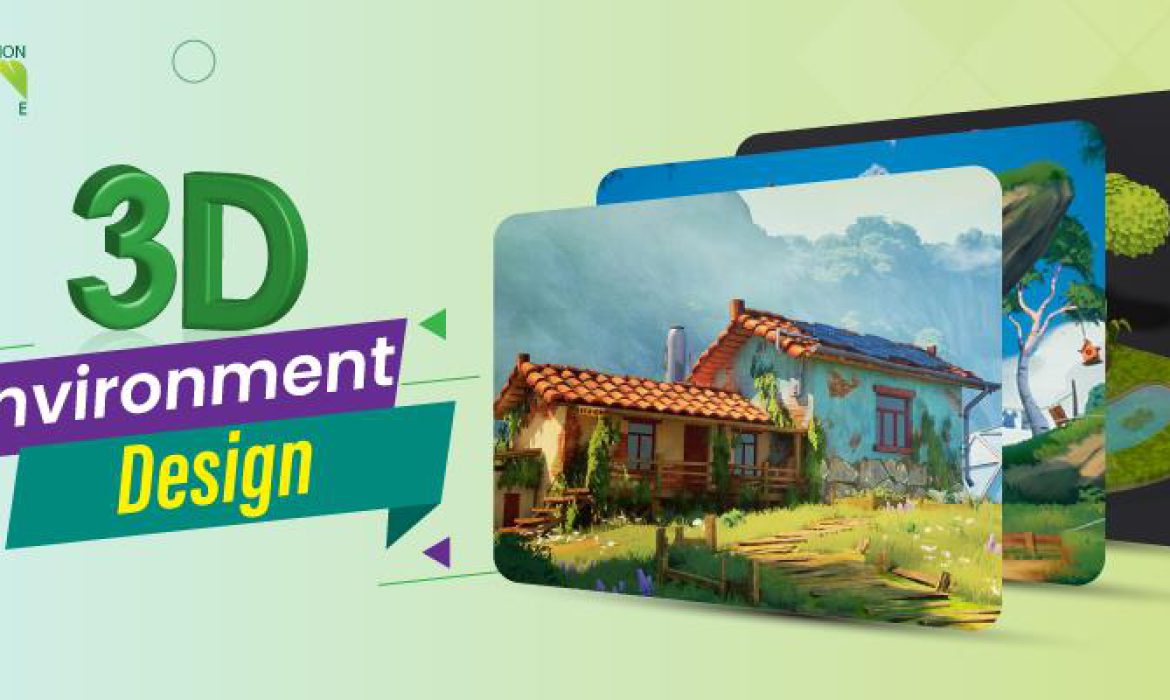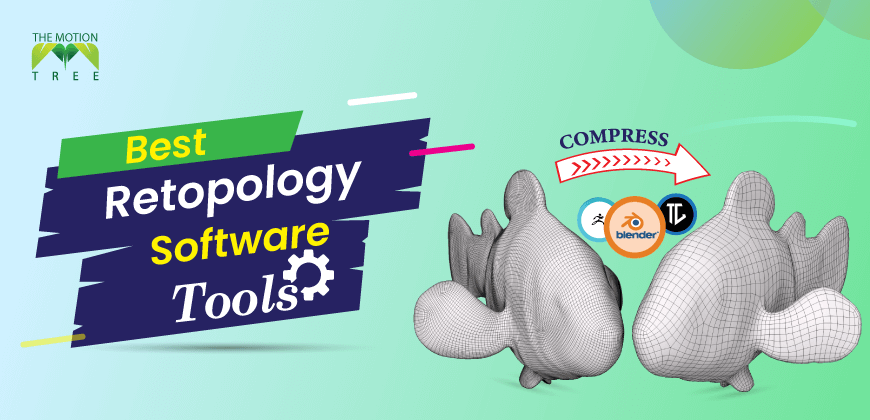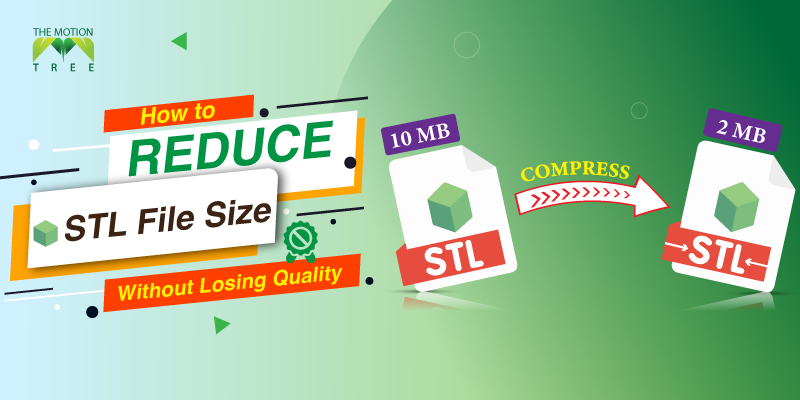![]() +1 929-458-6213
+1 929-458-6213
The digital world is expanding at an unprecedented rate, and 3D environment design is at the forefront of this transformation. From realistic gaming landscapes to architectural walkthroughs and immersive VR simulations, 3D environments allow us to experience places and stories that feel real, even when they exist only in pixels.
For businesses, creators, and storytellers, 3D design isn’t just a tool; it’s a necessity. Whether you’re hiring a 3D environment artist, budgeting for 3D environment modelling costs, or seeking customised 3D environment solutions, this guide will walk you through everything you need to know.
Table of Contents
ToggleThe Role of a 3D Environment Artist
As a 3D environment artist, if you possess the right set of skills, then your role in this industry will be unmatchable. The demand for 3D environment design is surging like never before, and as time passes, the market size is expected to grow exponentially.
Skills Every 3D Environment Artist Must Master
A 3D environment artist is much more than a digital sculptor. They are storytellers who create entire worlds that feel alive and engaging. To achieve this, they must blend technical expertise with artistic creativity. One of the most important skills is mastering 3D modelling, which involves shaping objects, terrain, and architecture that make up an environment. This modelling is often supported by sculpting software, where intricate details such as cracks in stone, grooves in wood, or wrinkles in fabric are crafted to perfection.
In addition to modelling, environment artists must excel at texturing, which gives the objects their sense of realism. Textures transform plain models into believable surfaces, making a wooden crate look worn from years of use or a metal structure shine with reflective polish.
Software and Tools Used in 3D Environment Creation
To bring these worlds to life, environment artists rely on specialized software and tools. Programs like Autodesk Maya and 3ds Max remain industry standards, offering robust modeling and rendering capabilities. Blender has also become increasingly popular thanks to its open-source accessibility and advanced features. For texturing, Adobe’s Substance Painter offers powerful material creation tools that enable artists to replicate everything from rough stone walls to shiny, futuristic metals with extraordinary accuracy.
Rendering engines are equally essential, as they control how the final environment appears. Unreal Engine and Unity are at the forefront, enabling artists to place their creations in interactive, real-time spaces. These engines are not only crucial for video games but also for virtual reality experiences, architectural visualisations, and even cinematic productions. A skilled artist understands how to move fluidly between these tools, choosing the right combination to suit the unique requirements of a project.
Industries Leveraging 3D Environment Design
3D environment design of a product gives the viewer a realistic feel. Consumers nowadays prefer brands that can provide them with this experience flawlessly.
Gaming and Virtual Reality Experiences
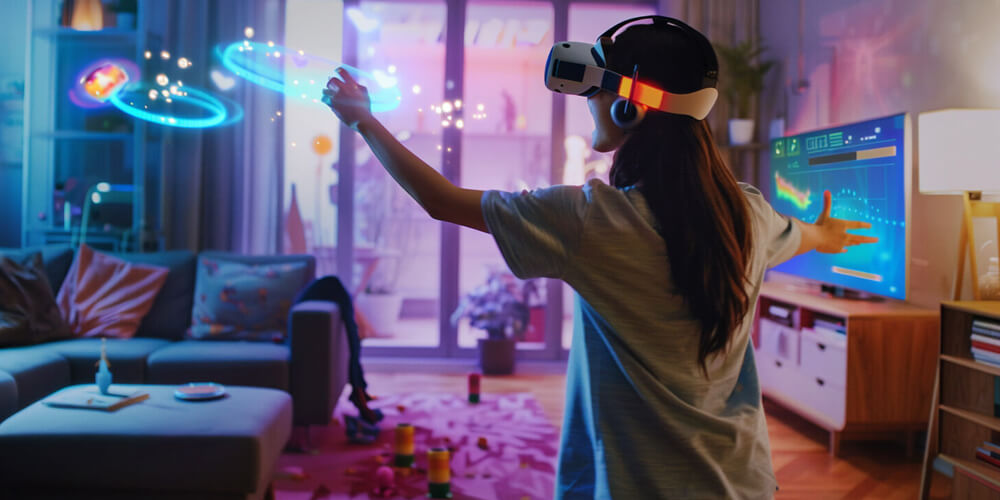
The gaming industry has benefited the most from the evolution of 3D environment design. Modern video games rely heavily on expansive and interactive landscapes that go beyond simple backdrops to become integral elements of the gameplay. An open-world role-playing game, for instance, might feature lush forests, bustling cities, and treacherous dungeons that immerse players in a believable universe. In these cases, the environment doesn’t merely decorate the story. It helps to tell it by influencing exploration, strategy, and emotional engagement.
Virtual reality (VR) pushes this further by demanding environments that react realistically as users move and interact. Designing for VR requires special considerations, such as optimizing performance to avoid motion sickness and ensuring textures and lighting feel natural from every angle.
Film, Animation, and VFX Production

Hollywood and the animation industry have long relied on 3D environment design to build worlds that would be impossible to film in reality. Science fiction blockbusters transport viewers to distant galaxies, while fantasy films bring to life magical kingdoms filled with castles, forests, and mystical landscapes. In many cases, these environments are so convincing that audiences are unaware they were digitally created.
Animation studios also depend on 3D environments, whether it’s a child’s animated adventure or a complex, adult-themed production. VFX-heavy projects, from natural disasters to futuristic cities, demand environments that are both photorealistic and seamlessly integrated with live-action footage.
Architecture and Real Estate Visualization
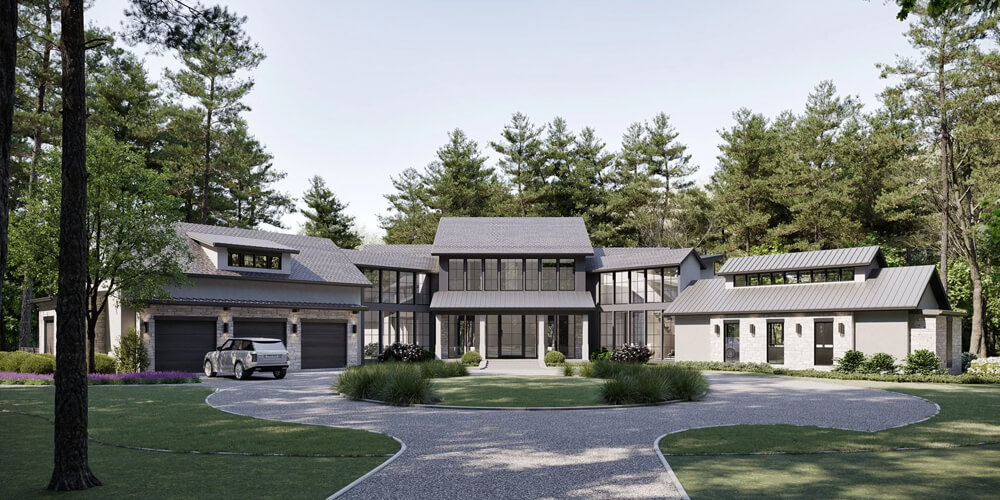
In architecture, 3D environments have revolutionized how designers present their projects. Instead of flat blueprints or static renders, architects can now create immersive walkthroughs that allow clients to explore buildings before they are built. These environments showcase not only the structure but also the surrounding landscape, lighting conditions, and even interior design details.
Real estate firms also use this technology to attract potential buyers. A luxury condominium, still under construction, can be experienced virtually, complete with realistic lighting, furniture, and views. This helps investors and buyers make informed decisions while enhancing their confidence in the project.
Education, Training, and Simulation
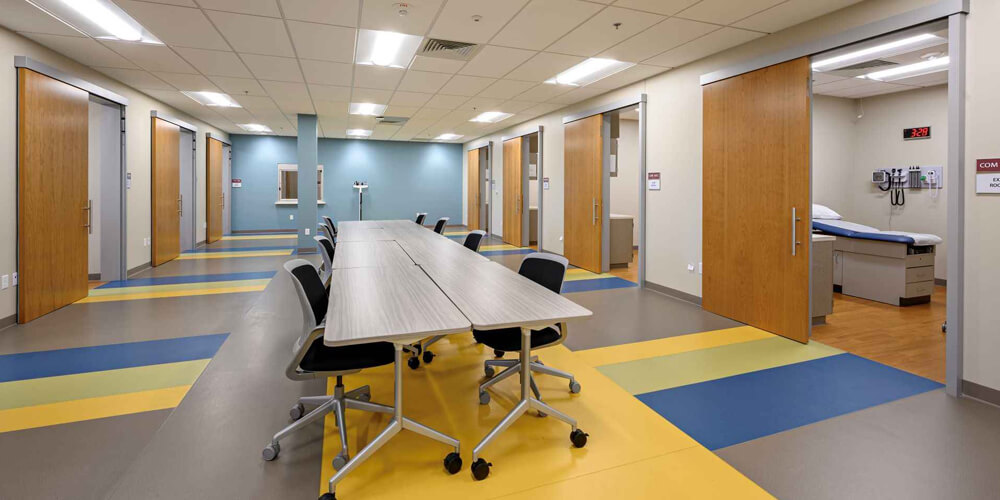
3D environments have transformed how we teach and train across multiple industries. Medical students can practise surgical procedures in virtual operating rooms, engineers can simulate construction projects, and military personnel can train in realistic combat scenarios, all without the risks or costs of real-life practice. These environments provide a safe yet highly immersive way to build skills and prepare for complex situations.
In education, interactive environments help students visualise otherwise abstract concepts. Imagine a history class where students can virtually walk through ancient Rome or a physics lesson where they manipulate forces in a 3D lab. These possibilities expand learning beyond textbooks, making lessons more engaging and impactful.
The Process of Creating a 3D Environment Design

The process of creating a 3D design is not anything like capturing a product photo. It requires an actual visualisation and storytelling creative mind.
Conceptualization and Storyboarding
Every successful environment begins with a strong concept. Before opening any software, artists and designers spend time brainstorming and sketching ideas. Storyboards and concept art establish the look and feel of the world, capturing details like mood, scale, and narrative purpose. For example, a futuristic city environment might start with rough sketches of skyscrapers, flying vehicles, and neon lighting that communicate the overall aesthetic.
This stage is critical because it sets the tone for everything that follows. Without a clear vision, the environment risks feeling disjointed or unconvincing. Collaboration often occurs here as well, with artists, writers, and directors ensuring that the environment aligns with the story or purpose of the project.
3D Modeling and Asset Creation
Once the concept is clear, the modeling process begins. Artists build the environment piece by piece, starting with larger structures like landscapes, buildings, or mountains before moving to smaller details like furniture, plants, or everyday objects. This is where technical skills come into play, as artists must ensure proportions, scaling, and geometry are accurate.
High-poly models may be used for cinematic projects that demand extreme detail, while low-poly models are favored for video games or VR experiences where performance optimization is key. Asset libraries are sometimes employed for efficiency, but custom assets often add uniqueness and authenticity.
Texturing, Lighting, and Rendering
With models complete, the next step is texturing. A plain model might have the correct shape, but without textures, it looks lifeless. Textures add personality, weathered bricks, sparkling water, or cracked asphalt, all of which make the scene believable. Lighting then brings the environment to life. A sunrise can create a warm and hopeful tone, while harsh shadows might establish mystery or tension.
Rendering combines all these elements into final visuals. Depending on the project, rendering might prioritize photorealism for film or optimized visuals for real-time interactivity in games.
Final Integration and Optimization
The last step is integrating the environment into its intended platform, whether that’s a game engine, VR headset, or film pipeline. Optimization ensures the environment runs smoothly without losing detail. This may involve reducing polygon counts, adjusting textures, or streamlining lighting systems. For interactive projects like games, performance is just as important as visuals.
Understanding 3D Environment Modeling Cost
Currently, the cost of the 3D modelling is on the upper side. There are some factors behind this, such as complexity, quality, and the experience of the artist. Not only that, but the cost may increase or decrease depending on whether you are hiring studios or freelancers.
Factors Influencing Pricing
The 3D environment modeling cost can vary dramatically depending on several factors. The most significant is complexity. A small room with minimal props is far less costly than a sprawling open-world city filled with interactive elements. The level of detail also plays a role; photorealistic scenes with intricate textures and lighting require more time and expertise than stylized or simplified designs.
The artist’s experience level is another important factor. A junior freelancer may offer competitive pricing but might lack the advanced skills required for high-end projects. On the other hand, seasoned professionals or studios deliver exceptional quality but at higher rates. Software licenses, rendering resources, and revision requests can also add to overall costs.
Cost Comparison: Freelancers vs. Studios
When it comes to hiring talent, businesses must weigh the benefits of freelancers versus studios. Freelancers are often more affordable, making them a good choice for smaller projects or startups with limited budgets. However, working with freelancers sometimes carries risks, such as inconsistent communication or limited capacity for large-scale projects.
Studios, by contrast, provide teams of specialists who can handle projects of any scale. Their structured workflow often results in faster turnaround and higher-quality results. The trade-off is cost, as studios generally charge significantly more due to overhead expenses and the breadth of services they provide.
There is a space between hiring in-house talent and going for studios, which is outsourcing projects to budget-friendly yet highly professional agencies like us. At The Motion Tree, we have decades of experience in handling large 3D environment design projects. Because of our genuine experience, we don’t tell you to give us the project right away. Instead, we offer you to take our free trial first and then decide for yourself.
Customized 3D Environment Solutions
In a 3D design solution, you can customise your product model in any way you want. It helps product owners to present their product more attractively.
Tailoring Environments for Branding and Storytelling
One of the greatest strengths of 3D environment design lies in its ability to be customised. Unlike generic backdrops, customised environments reflect a brand’s identity or a project’s unique story. For businesses, this might mean designing a virtual showroom where every detail, from lighting to materials, reinforces their brand message. For game studios, it could involve crafting fantasy landscapes that reflect the lore and emotional tone of the narrative.
Customization ensures that the environment not only looks appealing but also resonates with the intended audience. It creates a deeper connection by aligning visuals with values, goals, and storytelling.
Scalability and Adaptability in Custom Designs
Customized environments also provide scalability, which is especially valuable in industries like gaming and real estate. For example, a game world might start with a single region but gradually expand into new territories, all while maintaining consistency in design and style. Similarly, an architectural visualization might begin with one building but expand into entire neighborhoods as a project grows.
Adaptability is equally important. Environments can be repurposed for multiple uses; for example, a digital cityscape might serve as a film backdrop, a VR training ground, and a promotional tool for a real estate project. This versatility makes customized solutions not just creative but also cost-effective.
Challenges in 3D Environment Design
With so many advantages, there are some challenges with this concept as well. Some of them are technical limitations, Hardware demands and also some creative challenges.
Technical Limitations and Hardware Demands
Despite incredible advancements, 3D environment design still faces technical challenges. Creating highly detailed, realistic environments often requires powerful computers and software. Rendering times can be extensive, sometimes taking hours or even days to produce a single scene. For businesses or creators working with limited hardware, this can pose a significant barrier.
Moreover, storage and memory requirements are demanding, especially for interactive projects where large assets must be loaded in real time. These technical constraints force artists and developers to find creative solutions, balancing detail and performance without compromising user experience.
Balancing Realism with Performance
Another major challenge is achieving realism without sacrificing performance. Photorealistic visuals are impressive, but if they cause a game or VR simulation to lag, the immersive effect is lost. Artists must constantly optimize their assets, often simplifying details in areas less likely to be noticed by users.
For interactive environments, this balance is particularly critical. Players in a video game might overlook a slightly simplified distant mountain, but will notice if their gameplay slows down during a critical moment. Striking this balance requires skill, experience, and a deep understanding of both artistic principles and technical performance.
What does a 3D environment artist do?
A 3D environment artist designs and builds the digital landscapes, structures, and interactive spaces used in games, films, architecture, and training simulations.
How much does 3D environment modelling cost?
Costs vary from $500 for a small, simple scene to over $10,000 for complex, large-scale projects requiring advanced detail and interactivity.
Which industries use 3D environment design the most?
The gaming industry leads, followed by film, architecture, real estate, education, and training simulations.
Can I get customized 3D environment solutions for my business?
Yes, at The Motion Tree, we offer customized 3D environment solutions for any business. All you need to do is upload your images and share your requirements.
Is AI replacing human 3D environment artists?
AI supports and accelerates workflows but doesn’t replace the creativity, storytelling, and artistic vision of human designers.
Conclusion
3D environment design is more than digital artistry; it’s the foundation of immersive experiences in gaming, film, education, and business. With skilled 3D environment artists, careful planning of 3D environment modelling costs, and access to customized 3D environment solutions, companies can create stunning, interactive worlds that attract audiences. The Motion Tree can be one of the perfect choices for low-cost professional 3D services.
The future promises even greater opportunities as AI, VR, and the metaverse evolve, making now the perfect time to invest in 3D environments for creativity, training, and innovation for your business.
Related Posts

